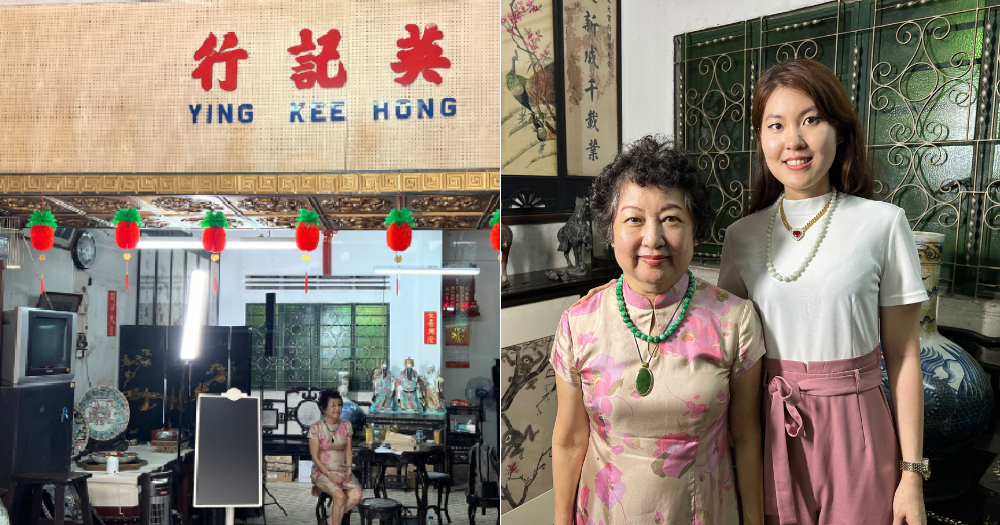Follow us on Telegram for the latest updates: https://t.me/mothershipsg
Tucked away in an inconspicuous corner of Lorong 12 Geylang is a time capsule of both Chinese cultural history and childhood memories.
For three generations, the Loh family has meticulously kept safe an antique collection in a shophouse which doubles as their family home.
Now, 67 years after the antique business was founded, the Lohs are finding new homes for the antiques.
One of Singapore's oldest Chinese antique shops
Ying Kee Hong was founded by Loh Wang Kee and is today one of the oldest antique shops selling Chinese antiques in Singapore, according to the Loh family.
Loh Wang Kee hailed from Guangdong, China, and was part of the pioneering migrants who made their way to Singapore to begin anew.
Before setting roots here, Loh was a jack of all trades and owned businesses of all kinds.
However, in the 1940s to fifties, the political situation in China became unfavourable to businessmen like Loh, so he fled to Hong Kong with his family.
Eventually, Loh made his way to Singapore on a small boat.
"He was quite empty-handed when he escaped here because he can't bring his business," Judy Loh, Wang Kee's daughter-in-law, shared.
Loh also had to leave his wife and children behind.
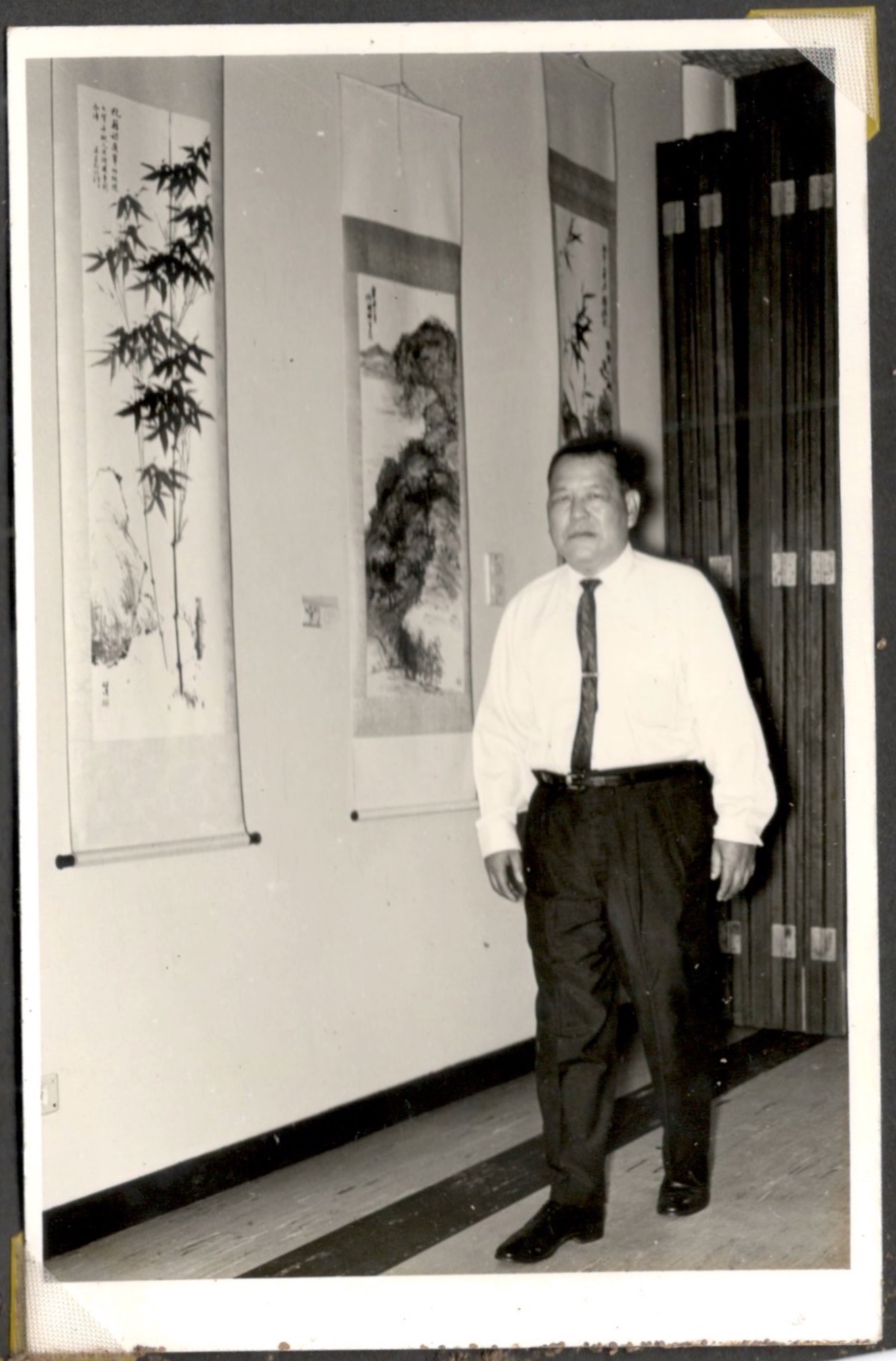 Image via Ying Kee Hong.
Image via Ying Kee Hong.
Once in Singapore, Loh helped out at a relative's shop to make a living.
"After that, when he gathered enough money, he started his own business," Judy said of the entrepreneur.
Named shop after wife
In 1956, Loh decided to marry his passion for antiques with his business mind, founded Ying Kee Hong and started trading Chinese antiques.
"So, I think my grandpa, from what I've heard about his beliefs and value system, he really values Chinese culture," Yinshan Loh, Wang Kee's granddaughter and Judy's daughter, said of the elder Loh.
Collecting antiques kept the "link" between Singapore and home alive for the elder Loh, the mother-daughter duo explained.
The antique shop itself was also a memory marker for the elder Loh.
The "Ying" in "Ying Kee Hong" is borrowed from the last Chinese character in his wife's name, "Phoon Phui Ying", who was still in Hong Kong at the time the antique shop was started.
Eventually, ten years after he first arrived in Singapore, Loh brought his wife and six children over from Hong Kong and the family was reunited.
The family included Judy's husband, Loh Weng Whye, the elder Loh's only surviving son.
The 'golden age' of Ying Kee Hong
Ying Kee Hong's first incarnation was located at Upper Nanking Street.
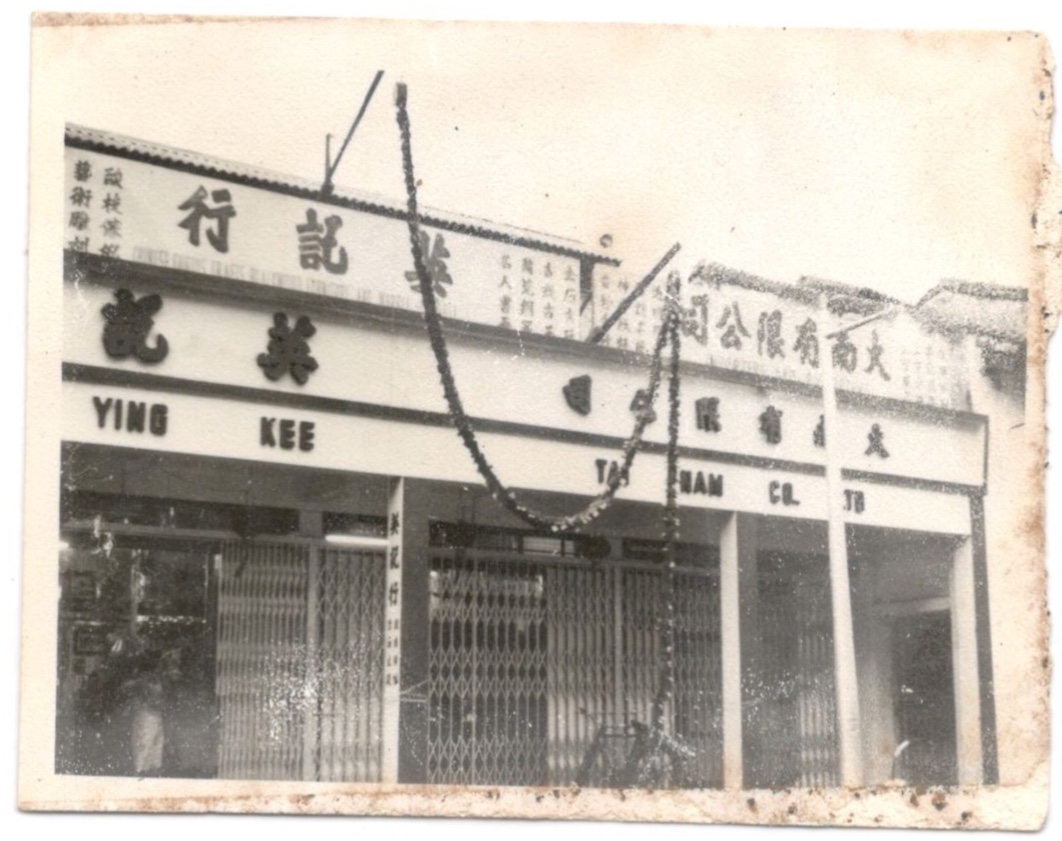 Image via Ying Kee Hong.
Image via Ying Kee Hong.
It later moved to its present location at Lorong 12 Geylang in 1971.
The antique trade at Ying Kee Hong grew significantly in 1966 when the Cultural Revolution in China began.
Then, Chinese leader Mao Zedong sought to destroy symbols of China's pre-communist past, including antiques which represent China's ancient culture and history.
Mao mobilised the Red Guards, a student-led paramilitary group, to actively seek and destroy antiques in people's homes.
To save the objects, officials in China shipped them in large batches out of the country.
Loh was one of the persons they contacted for this, Judy shared.
The pieces were brought to Hong Kong, where Loh had business connections.
Through them, Loh imported the antiques to Singapore.
 Original shipment invoice from 1969. The shipment came from Hong Kong, according to the invoice.
Original shipment invoice from 1969. The shipment came from Hong Kong, according to the invoice.
 Original shipment invoice from 1969. The shipment came from Hong Kong, according to the invoice.
Original shipment invoice from 1969. The shipment came from Hong Kong, according to the invoice.
Judy described this period as the "golden age" of Ying Kee Hong, partly owing to the large Chinese diaspora in Singapore.
The antiques were also in so much supply that people could get pieces at a price much lower than their true value.
According to the Lohs, Ying Kee Hong was patronised by people of stature, from tycoons to foreign dignitaries and statesmen.
"There were clients who will pay ahead of time so they could buy the items," Yinshan shared, illustrating the high demand Ying Kee Hong received in the sixties and seventies.
Sunset business
Alongside his wife, the elder Loh ran Ying Kee Hong until his passing in 1978.
Phoon continued the trade until she, too, passed in 1989.
Ying Kee Hong was then left in the care of their son and his wife.
The second generation of Lohs tried to keep up the business. However, as China had started to turn away from isolationism, Chinese antiques were not as rare as it was, and demand slowly faded in Singapore.
Judy felt that younger people were not as interested in "old-fashioned" antiques.
"Retailing antiques is a sunset business," Judy said sadly.
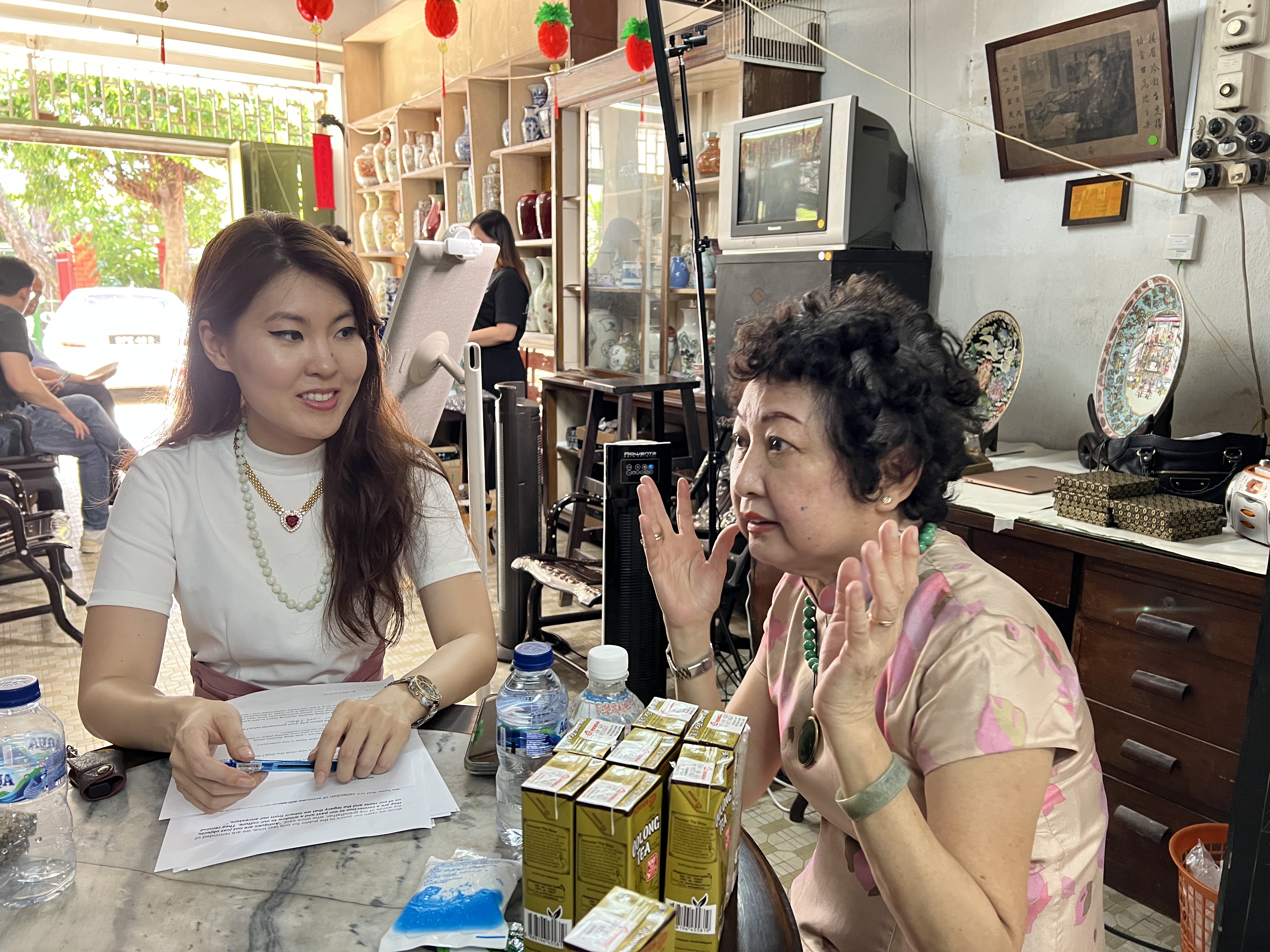 Yinshan Loh (left) and Judy Loh (right).
Yinshan Loh (left) and Judy Loh (right).
Members of the Loh family also have other aspirations.
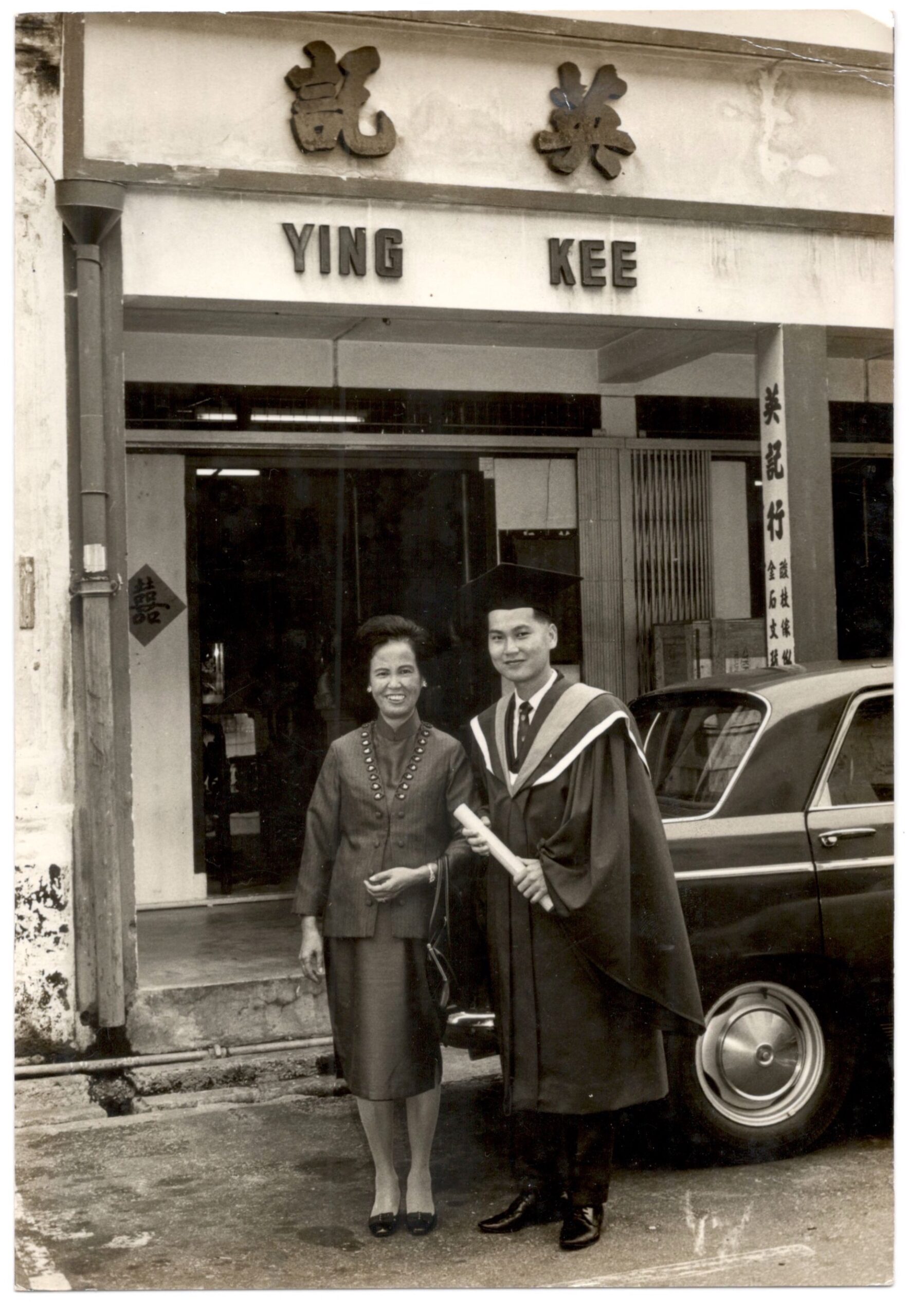 Phoon Phui Ying and her son, Loh Weng Whye. Image via Ying Kee Hong.
Phoon Phui Ying and her son, Loh Weng Whye. Image via Ying Kee Hong.
Wheng Whye held jobs in the civil service while his siblings were professionals.
"So, then, there was, in a way, no one to take over full-time," Yinshan said.
Childhood memories
So, in 2000, Ying Kee Hong went on hiatus.
Its wide-ranging collection was kept in situ in the Geylang shop and family house.
Today, 23 years later, Ying Kee Hong is like a time capsule.
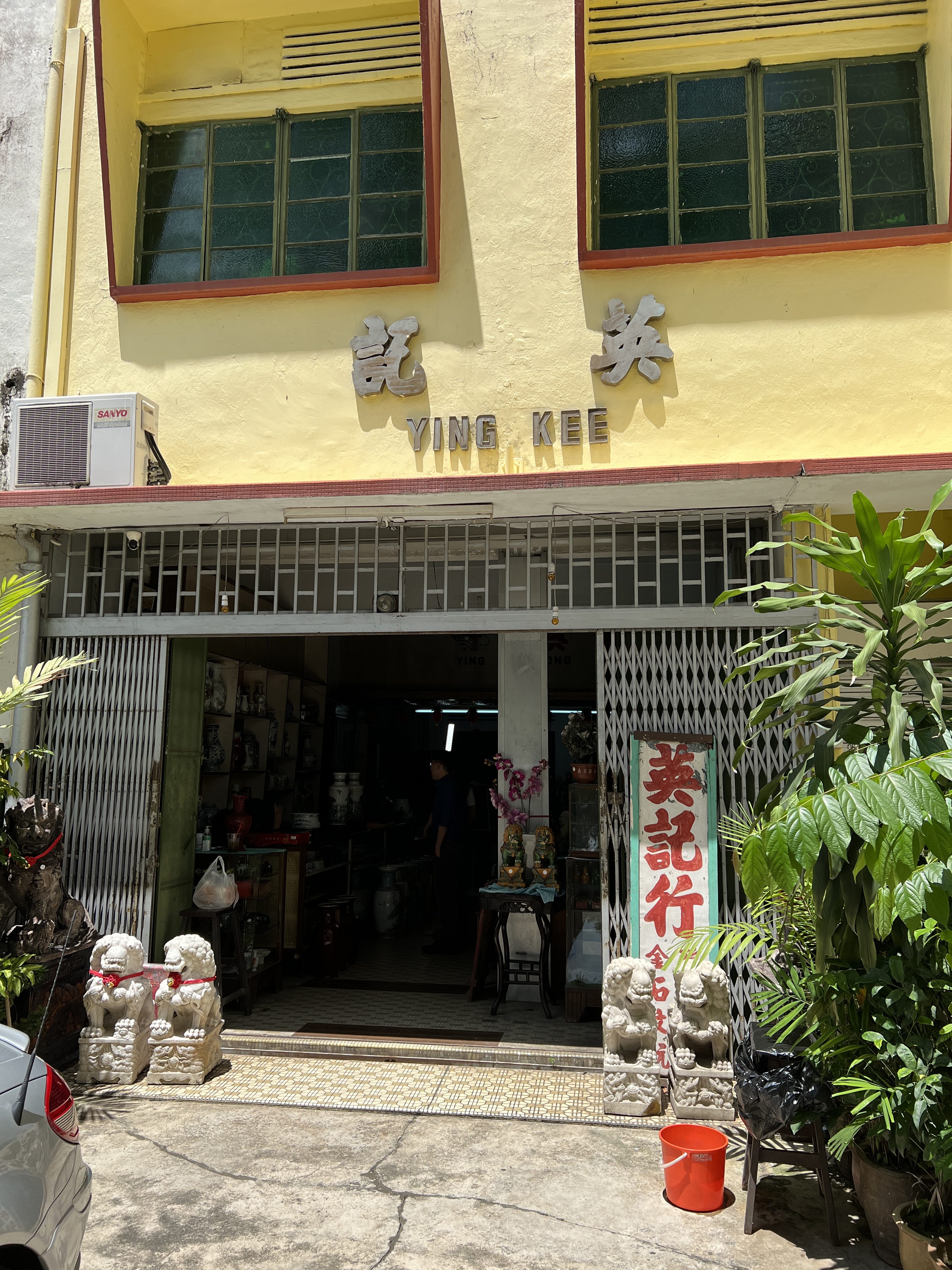
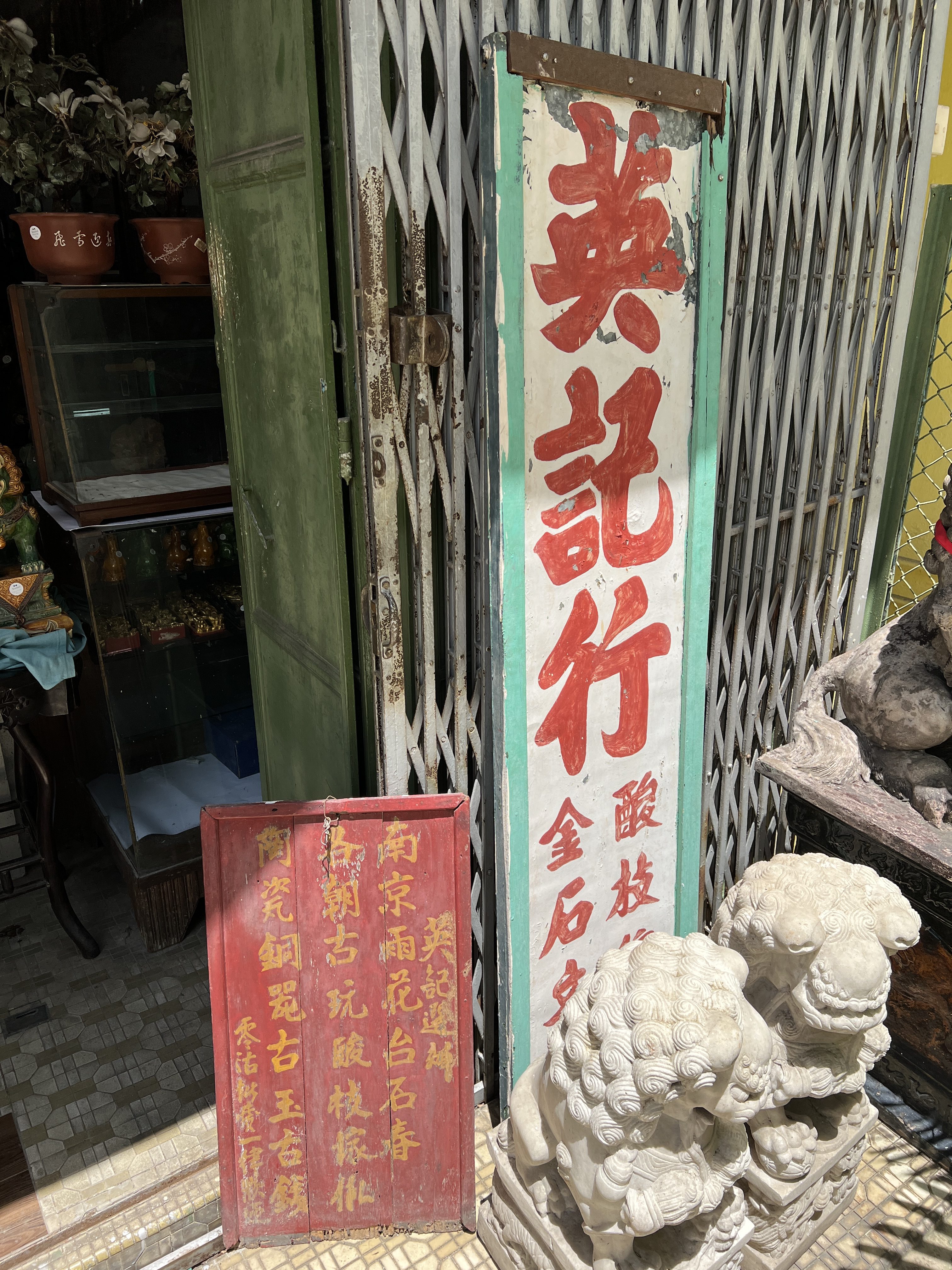 Original signboards for Ying Kee Hong.
Original signboards for Ying Kee Hong.
Inside the shop, electric switches that reminded one of the olden days were contrasted with modern-day amenities like a fibre optic termination point.
 Portraits of the elder Loh and wife, Phoon Phui Ying are hung on the wall inside Ying Kee Hong.
Portraits of the elder Loh and wife, Phoon Phui Ying are hung on the wall inside Ying Kee Hong.
For the third generation of Lohs, Ying Kee Hong housed not only antiques but their childhood memories too.
Yinshan stayed in the shophouse above Ying Kee Hong until she was around 18.
The antique shop on the ground level was her playground.
"Most of my life, I grew up surrounded by antiques. So, for example, if I'm playing with toys, I'll be playing with a bronze horse," Yinshan reminisced.
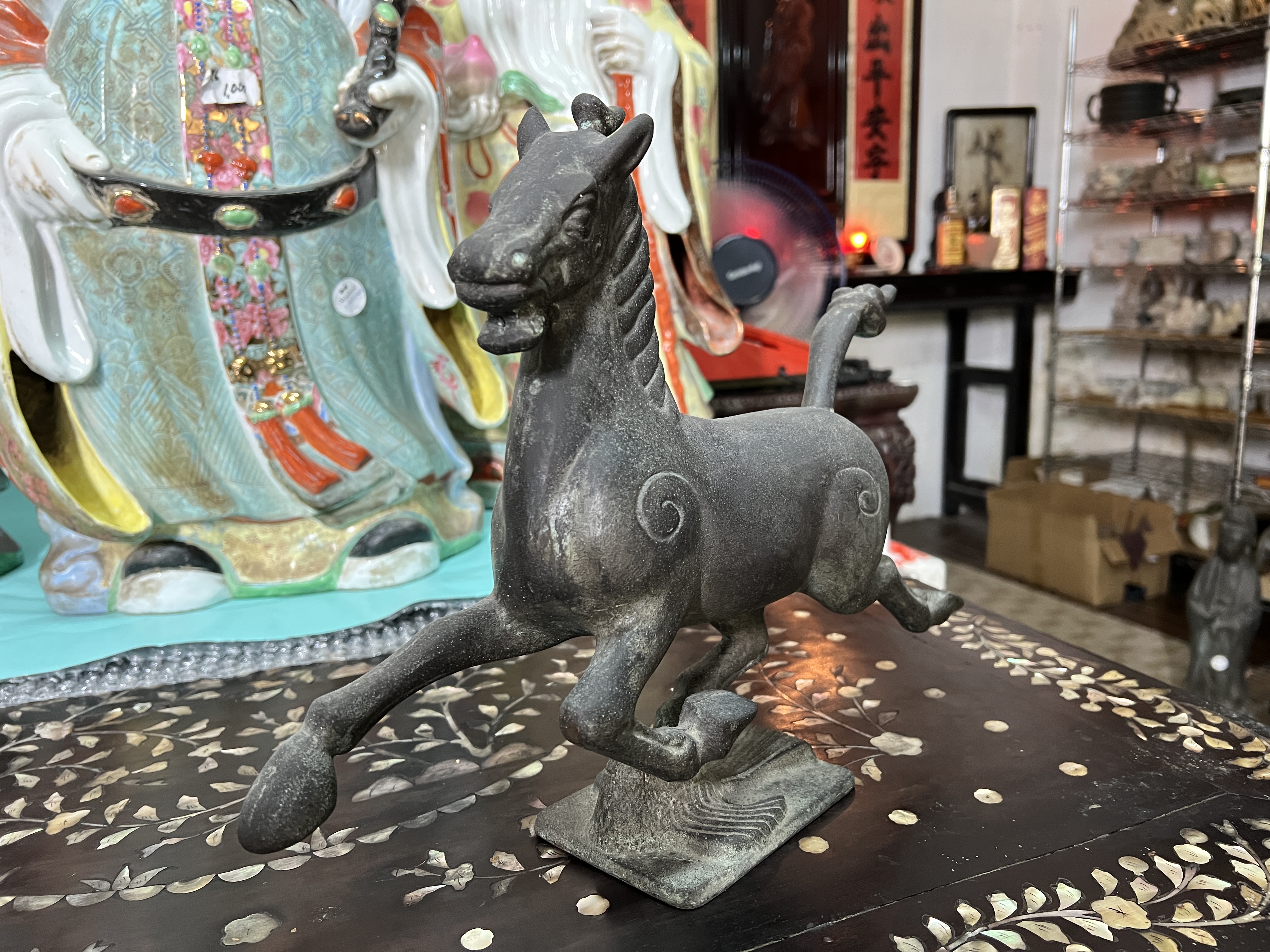 A replica of the Flying Horse of Gansu bronze sculpture.
A replica of the Flying Horse of Gansu bronze sculpture.
She also recalls getting lectures from grandma about not running around for fear of knocking over and damaging an antique.
Some of the pieces hold special memories for Yinshan.
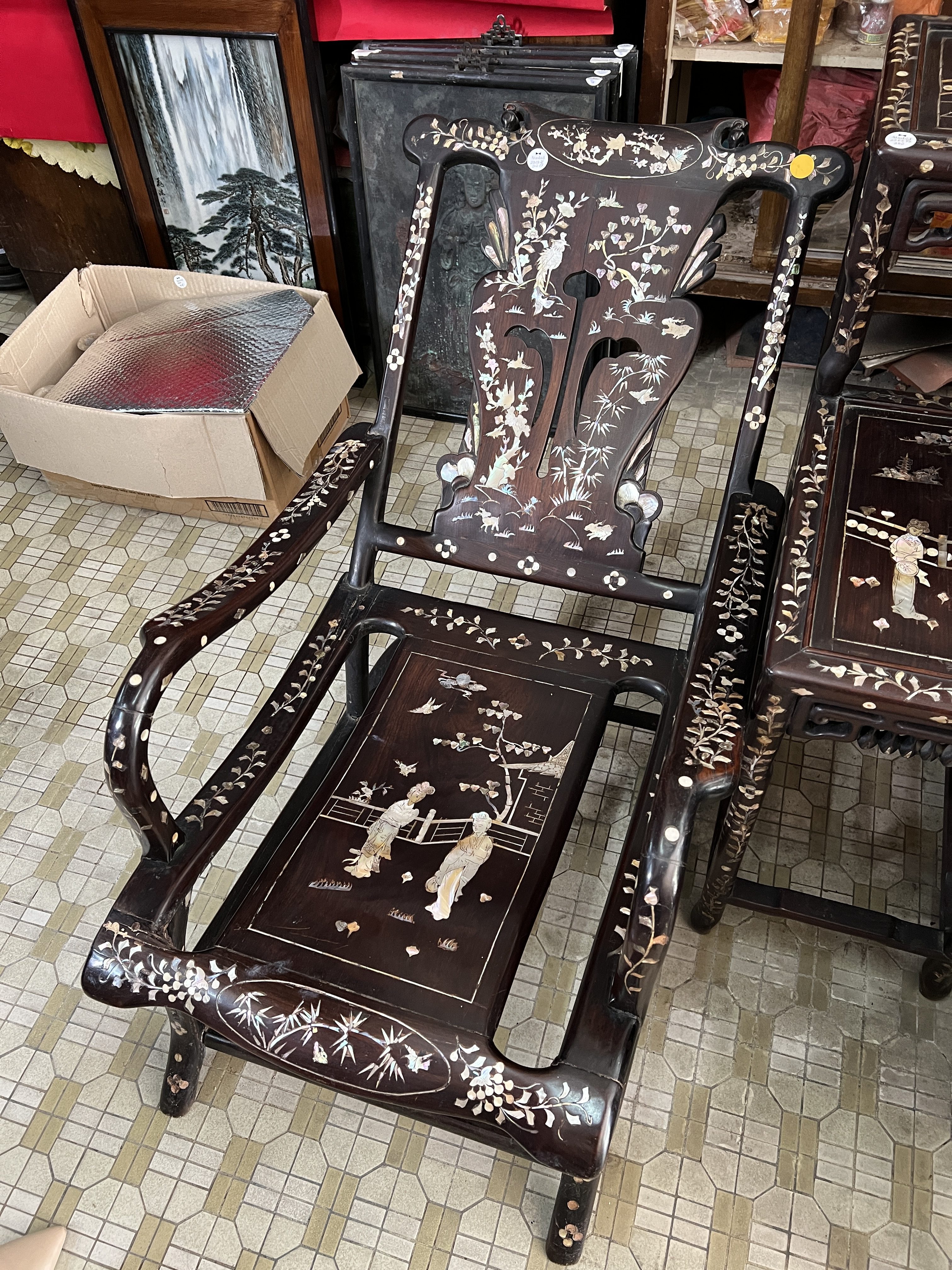
Pointing to a reclining lounge chair carved out of hardy Blackwood, Yinshan recalled:
"I would take all my naps on it when I came back home from school. So, to me, this is normal life and normal furniture. But now, as I got older, then I know like 'oh, that's a Qing dynasty piece that is like hundreds of years old, and it was passed down for many generations.'"
"Her classmates used to say she lives in a museum," Judy chimed in.
 The mother-daughter pair sporting jade pearl necklaces from the Loh's antique collection.
The mother-daughter pair sporting jade pearl necklaces from the Loh's antique collection.
Winding down
The Loh family have now sold the shophouse and is looking to pass on the collection to others who may value the histories behind the antiques.
They are also considering working with museums which might see the historical value of both the antiques and Loh's antique endeavours.
In total, the Loh family's collection boasts about 800 individual pieces.
The pieces originate from a period ranging from the Ming dynasty in the 1600s to the reign of Mao in the 1970s.

 Details on a translucent eggshell bowl. A mark on its base suggests it was made during the reign of Qianlong emperor in China.
Details on a translucent eggshell bowl. A mark on its base suggests it was made during the reign of Qianlong emperor in China.
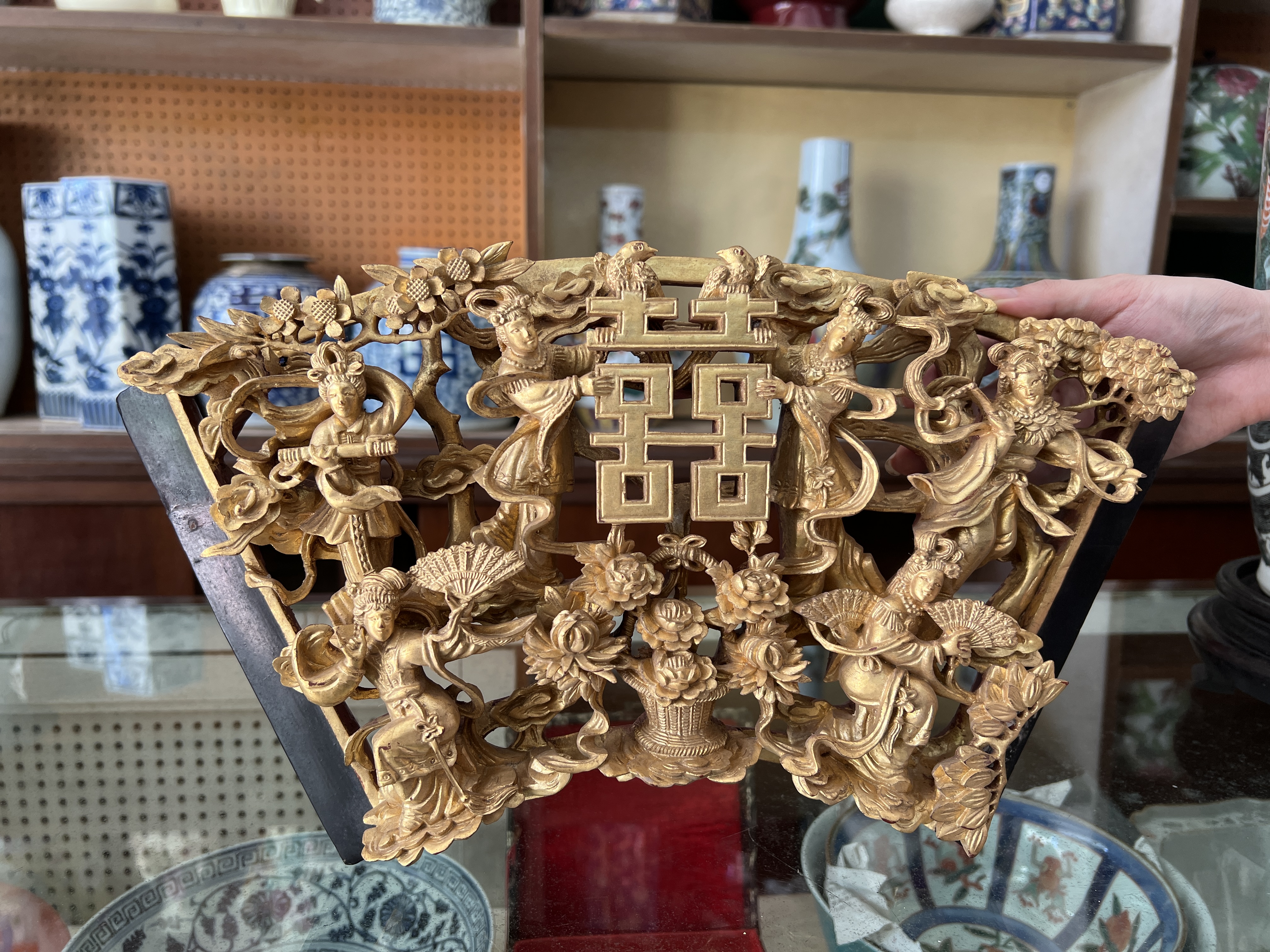 A wooden, gold-plated wedding decor. Carved during the Cultural Revolution in China.
A wooden, gold-plated wedding decor. Carved during the Cultural Revolution in China.
 Ashtray carved out of stone. Made during the Cultural Revolution in China.
Ashtray carved out of stone. Made during the Cultural Revolution in China.
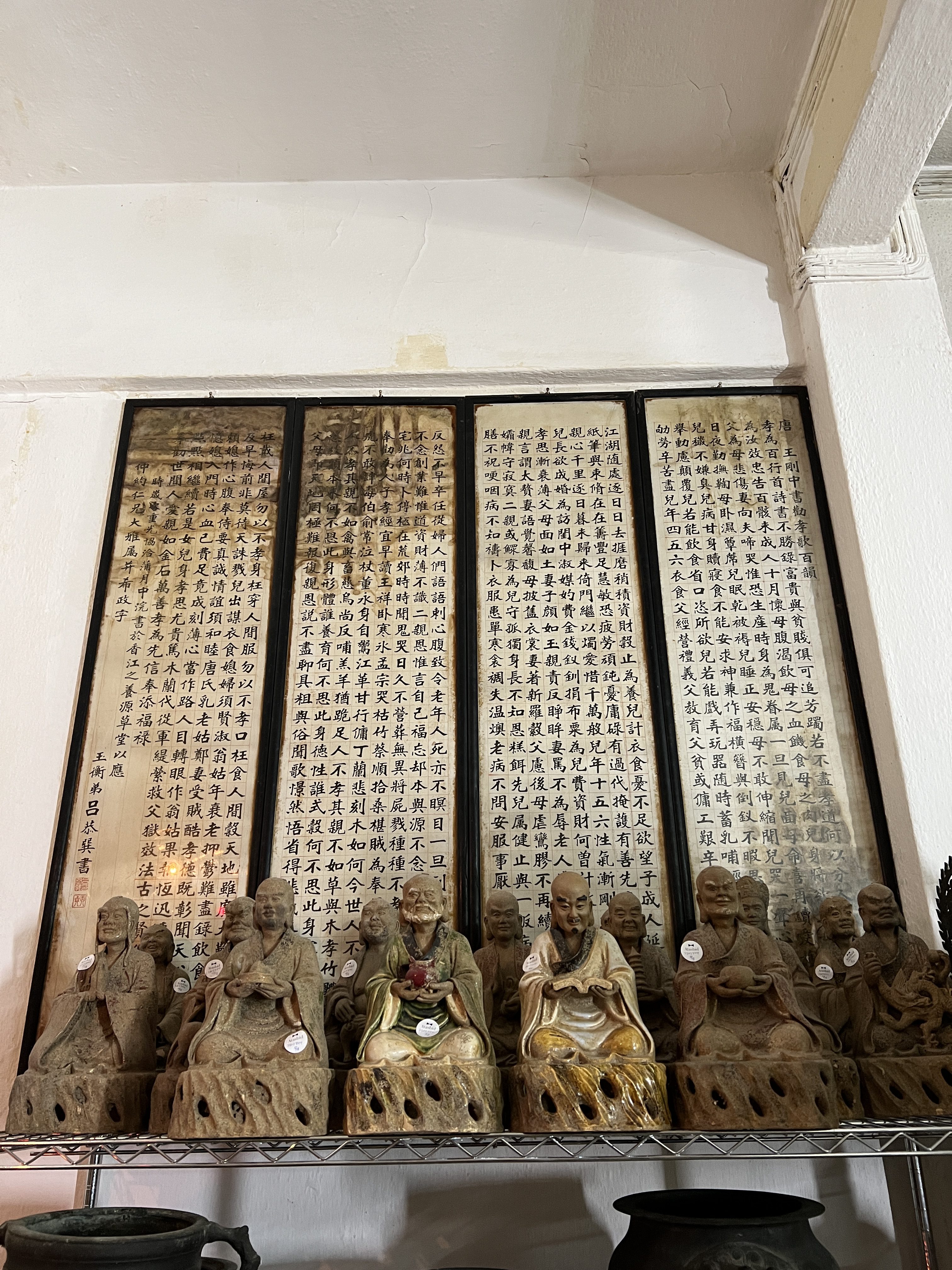 A script on filial piety.
A script on filial piety.

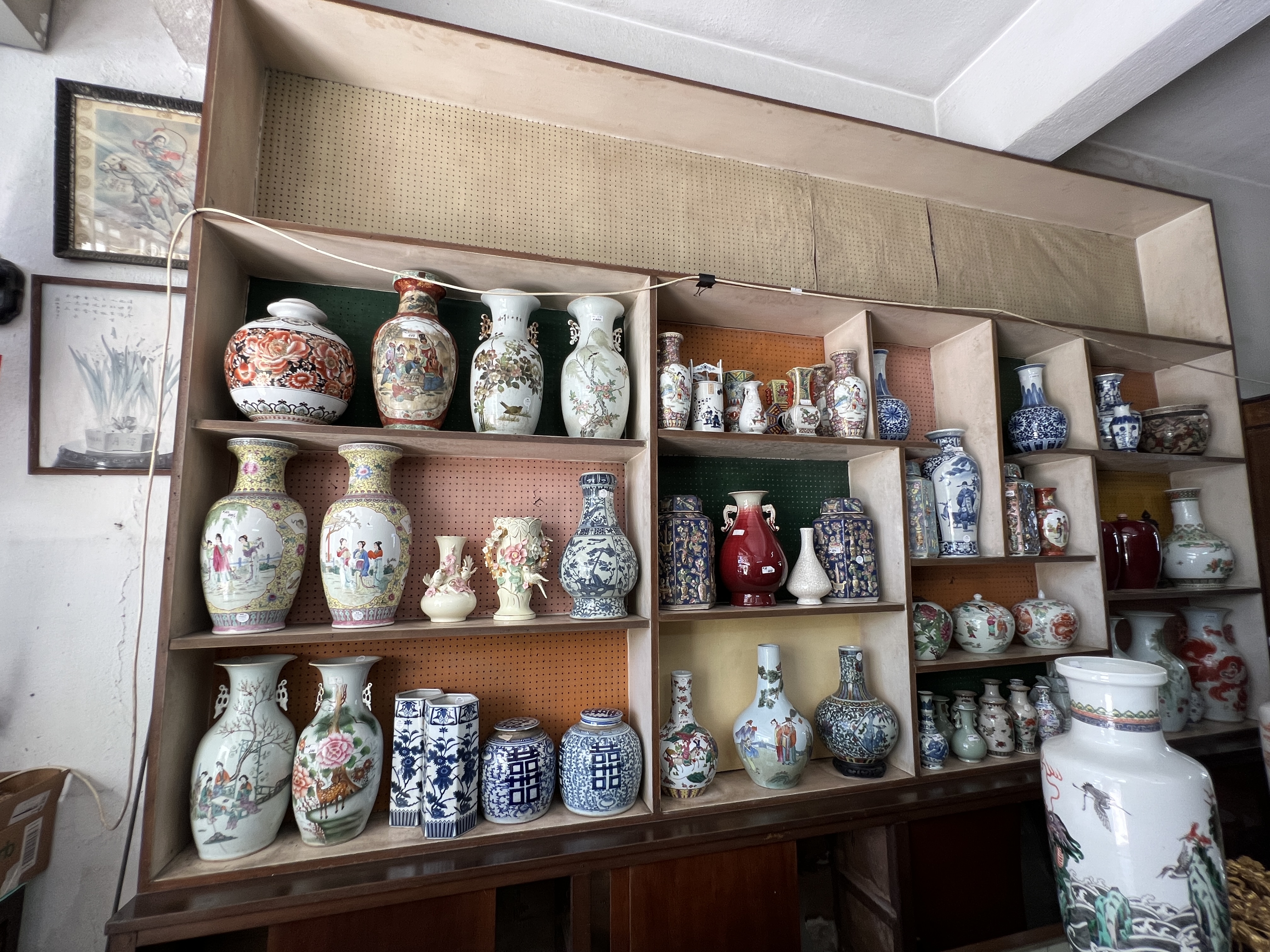
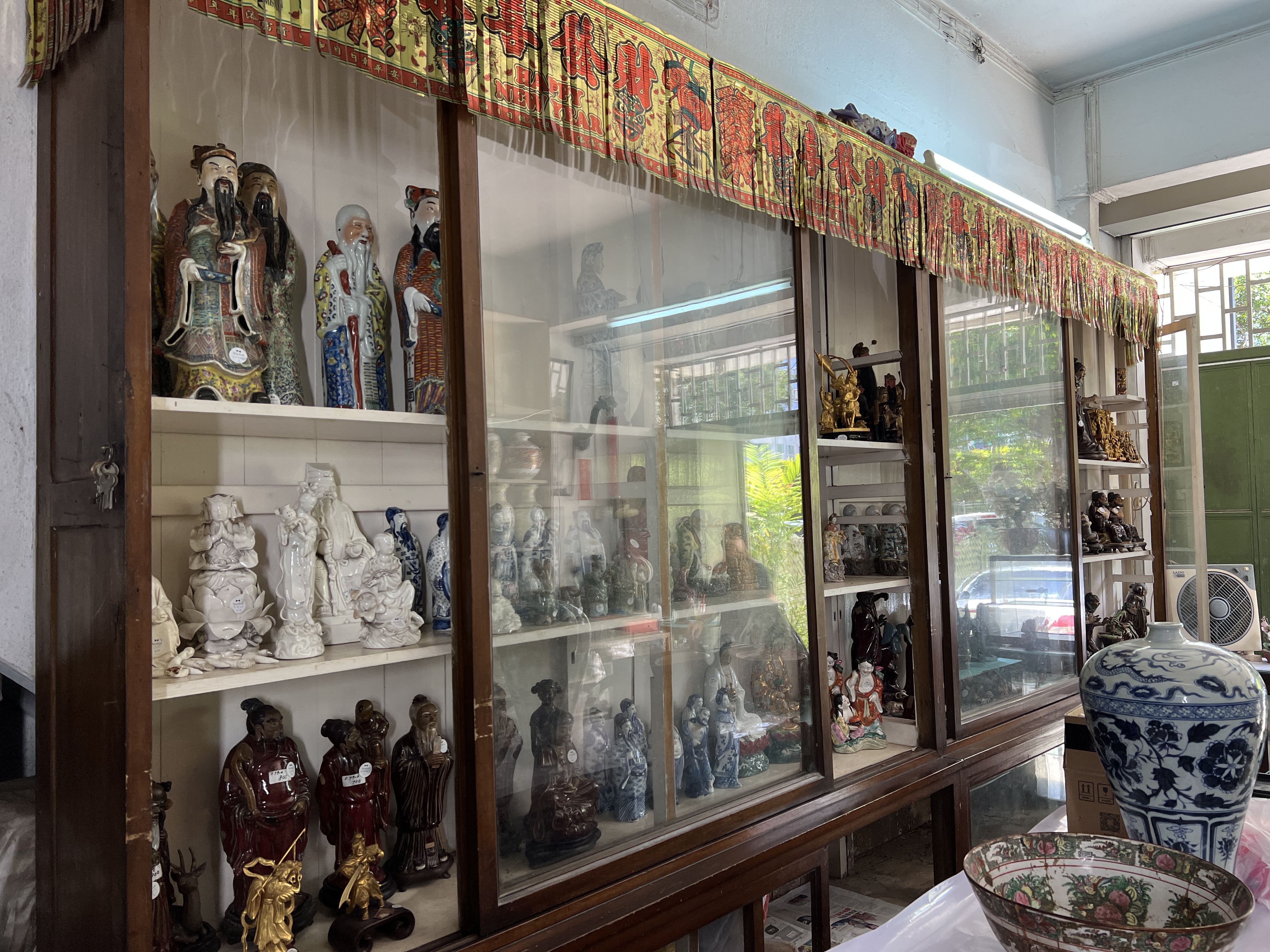
Browse the collection
Whether you are just curious or a vying collector, you can browse the collection at Ying Kee Hong and make a bid to own a piece of history through its online auction.
The auction will run until 6pm on Apr. 2, 2023.
All bids start from S$100.
The items are also available for physical viewing at Ying Kee Hong from 12pm to 5pm until Apr. 1, 2023.
The last day to visit the rustic shop will be on Apr. 2 between 1pm and 3pm.
Another auction will be organised, featuring Blackwood furniture from the Loh collection.
This next auction will be held in mid-April. More details can be found on the Ying Kee Hong website.
All images by Mothership, unless stated otherwise
If you like what you read, follow us on Facebook, Instagram, Twitter and Telegram to get the latest updates.
